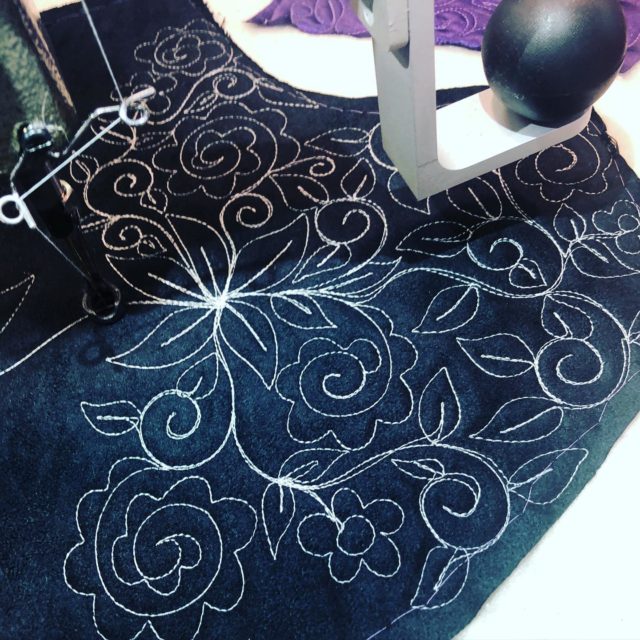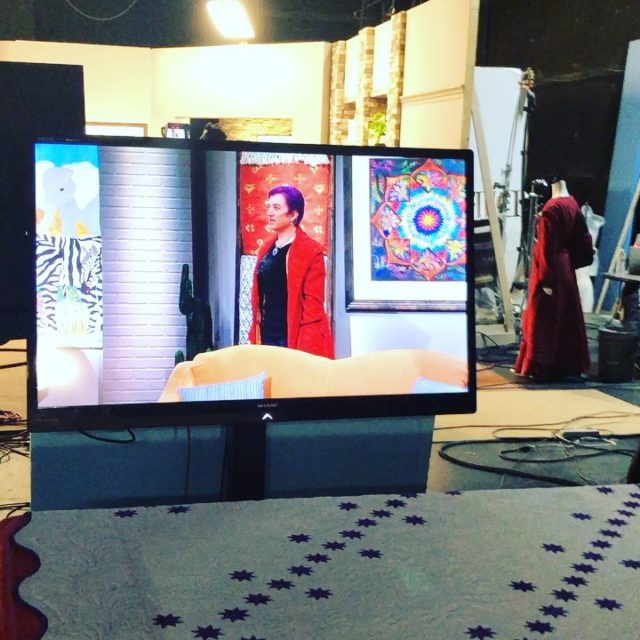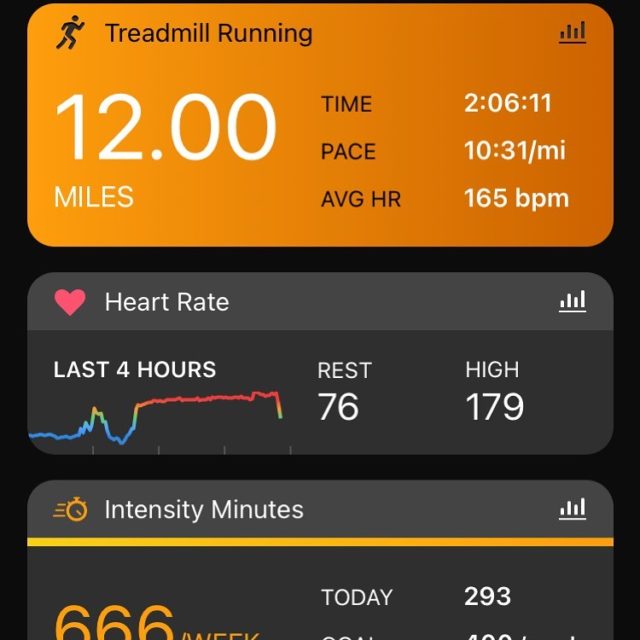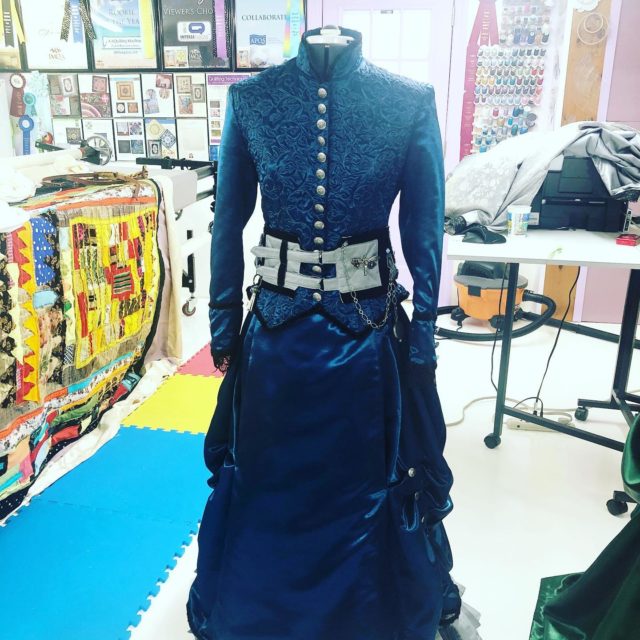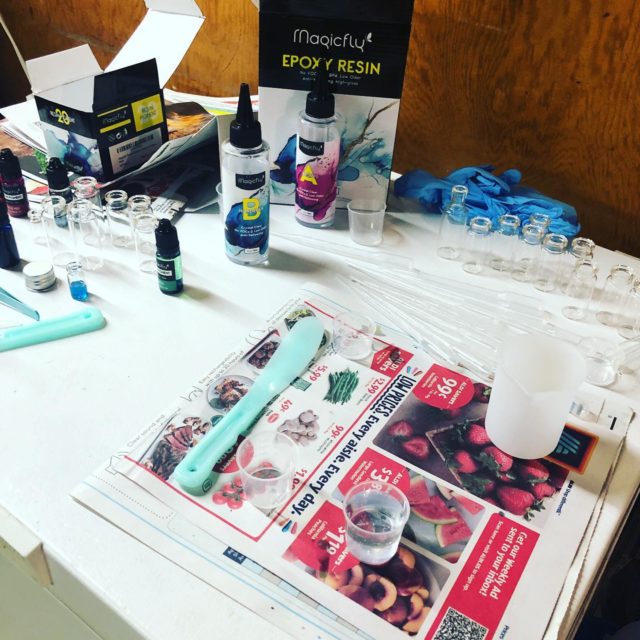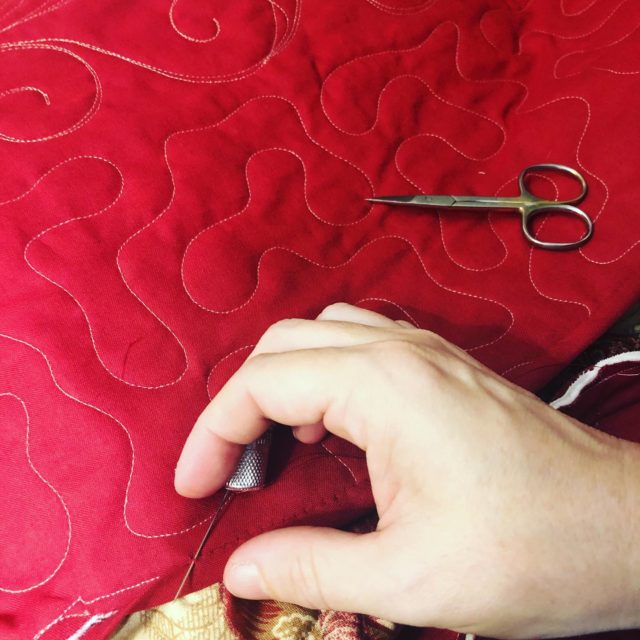
Who's Afraid of the Big, Bad Quilt Judge
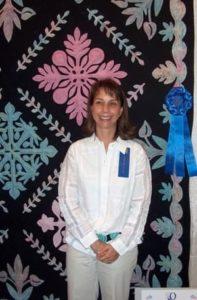
This week I’m doing something a little different. I asked my good friend, and quilting expert and Quilt Judge Cindy Seitz-Krug, if she would share some of her knowledge about quilt show judging. Happily she agreed.
Cindy started quilting when her mom signed her up for a quilting class at the local community college in 1992. She is best known for her machine quilting. Cindy likes to take traditional patterns and enhance them, creating a style all her own. She has an impressive list of awards to her credit, including winning Best of Show with her quilt, SIMPLY SANTA FE, at the 2011 AQS QuiltWeek in Lancaster, Pennsylvania. Cindy is an instructor with the AQS School of Quiltmaking. I’m sure you will find this post as interesting and informative as I did.
For more of Cindy’s work or to subscribe to her blog go to https://www.quintessentialquilting.com/blog.html
Who’s Afraid of the Big, Bad….QUILT JUDGE? by Cindy Seitz-Krug
Have you ever noticed that quilt show judges sometimes get a bad rap? For some reason, many quilters have a preconceived notion that all quilt show judges are MEAN! Well, I’m here to dispel that notion with an in-depth discussion about quilt show judging and the people behind the scenes.
I’ve been involved with quilt show judging in various ways for nearly twenty years. Since 1998, I’ve entered my quilts for judging in local, regional, national and international quilt show competitions. So I’ve read a few “comment sheets” (also known as critique sheets) in my day!
I also was the judging chairperson for twelve years at my local guild when I lived in California. About eight years ago, I took a two-day judging short course at the NQA show in Columbus, Ohio. Since then, I’ve judged and co-judged quite a few quilt shows, large and small, throughout the country.
I vividly remember back in 2001 going to my local quilt guild board meeting wanting to bring up the subject of judging our quilt show. They greeted the idea with much negativity! Up until that point, our quilt show only awarded one ribbon: “Viewer’s Choice”.
I have no idea why I felt it important our guild have our shows judged, but I just did! I think I mainly felt that it would bring credibility and standing to our show. Well, the meeting ended with the board members telling me that if I would volunteer to be in charge of the judging, and more importantly, convince our guild that having our shows judged was a good idea (we’d have to let the membership vote on it), then we could go ahead with the proposal.
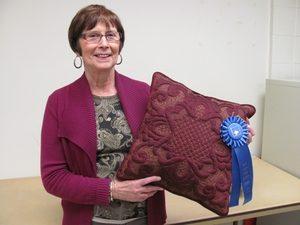
So, I began my research into everything involved with the “quilt show judging” process. I also met some judges (with whom I formed lasting friendships) who helped me to understand the process better. In the end, I convince my guild to allow us to judge our shows. I conveyed this through three major concepts:
1) Quilt show judges aren’t there to be mean or criticize; they help you to become a better quilter.
2) Having your quilts judged will ALWAYS make you a better quilter. because if you know judging is taking place, you will go above and beyond to perfect your workmanship. For instance, if you’re piecing and you notice that some of your points aren’t great, you will probably go back and fix them, or better yet, do them correctly the first time. You’ll also pay much more attention to those applique stitches, smooth curves and sharp points.
3) The last thing I used as an example to convince the guild membership was this analogy:
If your child or grandchild told you, “Grandma, I don’t want to play in my soccer game this Saturday because we’re just going to lose anyway”, you wouldn’t just say, “OK honey, then don’t play.” No, you’d say, “Winning isn’t everything; you just have to get out there and do the best you can whether you win or lose.”
Well, needless to say, that point hit home. Having your quilts judged isn’t always about winning ribbons; it’s about giving it your best shot.
Happily I can report that the membership voted to implement judging at all of our future shows. From that point on, people repeatedly said the quality of the quilts at the shows just got better every year. And it’s sooooo true!
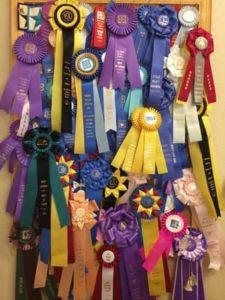
Now, back to the so-called “mean judges”. That’s definitely a misconception. I’ve met many judges over the past 20 years. They’ve all been exceptionally nice and genuinely interested in helping quilters improve their skills. I’ve also had hundreds of comment sheets from nearly a hundred different judges around the country. About 99% of those comment sheets have been helpful.
I will admit, there have been a couple of comment sheets that were a bit abusive. Of those few “mean” ones, one was down-right comical! I almost laughed when I read it. I knew that that particular quilt was a good quilt (having won several major awards at other shows). That judge, however, (someone I’d never even heard of, nor did I recognize her when I Googled her) apparently had issues with it! Well, to heck with her! I shrugged it off and tried not to dwell on it.
This brings me to the subject of “certified” and “non-certified” judges. A certified judge (CJ) has gone through a long, rigorous certification process through the National Association of Certified Quilt Judges. (Formerly the National Quilting Association) That process takes two to three years, and is at the expense of the judging candidates themselves. I think it’s a wonderful program, and the judges that come out of that program are some of the best!
However, there aren’t very many certified judges in this country. Because of this, some shows hire non-certified judges (like myself). Usually, non-certified judges gained their knowledge of quilt show judging through the school of hard knocks. (Making award-winning quilts and seeing and analyzing many award-winning quilts). Little by little, these types of judges get more experience through actual quilt show judging, and become quite expert at it.
As a person who competes in many shows each year with my quilts, I would rather have my quilts judged by certified judges because there is much more consistency when CJs are doing the judging. However, I do realize there is a dearth of CJs in our country, so not all shows can go that route consistently.
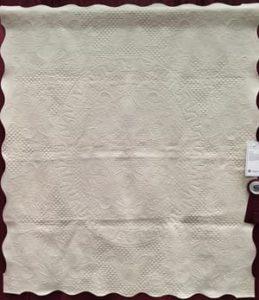
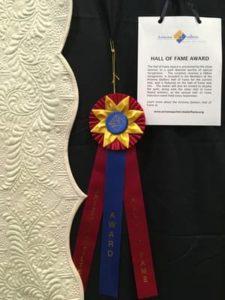
So, back to the original question: “Who’s afraid of the Big, Bad, Quilt Judge”? Well, after reading this, I hope it’s NOT YOU! Now you know that quilt judges LOVE quilts (just like we all do), and their main objective is to help each and every one of us to become better quilters.
So next time you get the opportunity to enter one of your quilts in a judged show, just do it! I can almost guarantee that you will gain some valuable information about how you can improve your quilting techniques on your future projects.
Sometimes a judge will make comments about things you already know. One of my favorite comments that I regularly hear from a judge is, “Strive for more consistent stitch length.” Whenever I read that, I laugh and say out-loud, “I’m striving, I’m striving!” Well of course I’m striving for consistent stitch length, but I’m not perfect, and I don’t use a stitch regulator, so it’s just something that a judge may observe on one of my quilts. I’m not bothered or insulted by it. Most of us already know the weak points on our quilts before they’re judged. But every now and then a judge will say something that you really had no idea you were doing wrong. So if that comment prompts you to take a class or watch a YouTube video so that you can improve your technique, then that’s a great thing!
The last thing I want to mention for this portion of my article on quilt show judging is about winning ribbons at quilt shows. If you’re new to the “judging” world, I would suggest you start out by entering a quilt at a local show. You may or may not win a ribbon on your first try. But if you do win a ribbon, I can almost guarantee that it will hook you on entering your quilts for judging. There’s something about winning ribbons that is completely addicting! But we don’t always win ribbons, so just remember, it’s also very gratifying to see your quilt(s) hanging at a show and having people admire them for their beauty.
That’s the most important thing in my opinion; sharing your work with others. You may not have created a masterpiece this time around, but you never know who is going to see your quilt hanging there and feel some kind of connection to it. And you don’t know who you may have inspired. So be brave and enter those shows and share your lovely work!
*If you enjoyed this blog, my next two articles will also deal with quilt show judging. The next blog will discuss some of the things judges look for in award-winning quilts. The last blog in this series will discuss all the things involved in entering quilts in national shows (entry forms, fees, photos, shipping, etc).
**If your quilt guild is considering moving from a “Viewer’s Choice” type show to a “Judged Show”, the best resource for you to check out is this book:
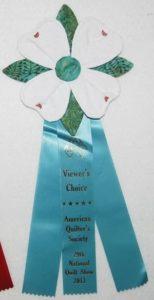
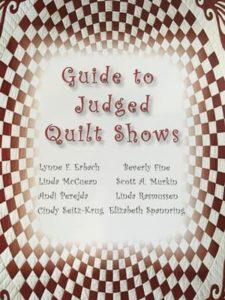
Guide to Judged Quilt Shows published by the National Quilting Association, 2008
(Some free copies of this book are available but need to be tracked down. Contact me if you’re interested and I’ll work to get a copy into your hands.)

